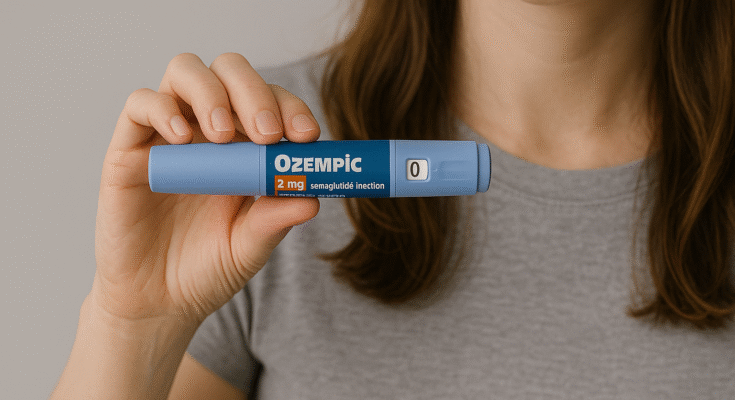You’ve been riding the Ozempic wave, and it’s been a game-changer for your weight loss journey. The extra pounds are gone, your confidence is soaring, and now you’re ready to take on the next chapter: life without Ozempic. But how do you step away from this powerful medication without unraveling your hard-earned progress? Weaning off Ozempic, or semaglutide, isn’t as simple as flipping a switch. It requires a thoughtful, strategic plan to maintain your results while keeping your health in check. As an expert in weight management, I’m here to guide you through this transition with practical advice, a sprinkle of encouragement, and science-backed strategies to keep you on track. Let’s embark on the journey to sustainable success!
Why Weaning Off Ozempic Matters
Ozempic, a GLP-1 receptor agonist, was originally developed for type 2 diabetes but has become a go-to for weight loss. It works by mimicking a hormone that curbs appetite, slows digestion, and stabilizes blood sugar, making you feel full longer and taming those pesky cravings. It’s like having a built-in coach for portion control. However, when you stop taking Ozempic, your body’s natural hunger signals and metabolism may revert to their old patterns, which can lead to weight regain if you’re not prepared. Stopping abruptly can also trigger increased appetite, blood sugar fluctuations, or digestive discomfort. A gradual, intentional approach is crucial to ease your body into life without the medication’s support, setting the stage for long-term success.
Partner with Your Healthcare Provider
Before you even think about reducing your Ozempic dose, have an honest conversation with your healthcare provider. Your doctor or a weight management specialist will evaluate whether you’re ready to taper off, taking into account your medical history, current dose, and weight loss goals. Since everyone’s body responds differently, this discussion ensures your plan is tailored to your unique needs. Come prepared with questions about how to taper your dose, what lifestyle changes to prioritize, and what symptoms to monitor. Keeping a journal of your weight, symptoms, and energy levels can provide valuable insights, helping your doctor craft a plan that fits you perfectly. This partnership is the foundation of a smooth transition.
Gradually Reduce Your Dose
Tapering your Ozempic dose is the cornerstone of weaning off successfully. If you’re on a higher dose, such as 2 mg weekly, you might reduce to 1 mg for four to eight weeks, then drop to 0.5 mg for another stretch, and finally ease down to 0.25 mg before stopping entirely. If you’re on a lower dose, like 1 mg or 0.5 mg, you might spend a few weeks at 0.25 mg before discontinuing. Your doctor will customize this schedule based on how your body responds. This gradual reduction helps your system adjust to its natural appetite regulation and minimizes the risk of rebound hunger or nausea. Think of it like easing off the gas pedal rather than slamming on the brakes—it’s smoother and safer. Stay alert for side effects like mild nausea, fatigue, or increased hunger during this phase, and reach out to your doctor if they become challenging to adjust the plan or address symptoms with dietary tweaks.
Build a Sustainable Nutrition Plan
As Ozempic’s appetite-suppressing effects fade, nutrition becomes your secret weapon. Without the medication, hunger cues may return with a vengeance, so a solid eating plan is essential. Focus on meals rich in protein—lean meats, eggs, tofu, or legumes—and fiber-packed foods like vegetables, whole grains, and fruits. These keep you full and stabilize blood sugar, mimicking some of Ozempic’s magic. Practice portion control by using smaller plates or eating mindfully to avoid overeating. Steer clear of refined carbs and sugars, which can spike hunger and undo your progress, and opt for whole grains or nuts instead. Staying hydrated is also critical—aim for eight to ten cups of water daily, especially before meals, to curb hunger and boost energy. Working with a registered dietitian can make this enjoyable and sustainable. Love tacos? Keep them in the mix with veggie-packed toppings and a lean protein base. The goal is a nutrition plan that feels like a lifestyle, not a chore.
Make Exercise a Way of Life
Exercise is your ally in maintaining weight loss and feeling unstoppable. Ozempic may have helped you shed pounds, but physical activity locks in those results. Incorporate cardio, like brisk walking, cycling, or swimming, most days of the week to boost metabolism and heart health—even a 30-minute walk around the neighborhood counts. Strength training, such as lifting weights or doing bodyweight exercises like squats or push-ups, a couple of times a week builds muscle, which burns more calories at rest and keeps you toned. Don’t overlook flexibility work—yoga or stretching improves movement and reduces stress, which can prevent emotional eating. Find activities that spark joy, whether it’s dancing to your favorite tunes or hiking with a friend. Consistency trumps intensity, so start where you are and build from there. Your body will thank you for making movement a lifelong habit.
Strengthen Your Mindset
Your mindset is just as critical as your diet and exercise. Weaning off Ozempic can test your mental resilience as hunger cues return and old habits try to creep back. Practice mindful eating by tuning into hunger and fullness signals, eating slowly, and savoring every bite. Manage stress with meditation, deep breathing, or journaling to avoid turning to food for comfort. Focus on non-scale victories, like having more energy, sleeping better, or crushing your workouts, to stay motivated. Surround yourself with a support system—friends, family, or a weight loss group—to keep you accountable. If emotional eating patterns emerge, a therapist specializing in behavior change can help you build a healthier relationship with food. This mental shift is about embracing a new way of living, not just maintaining your weight.
Monitor and Stay Flexible
As you taper off Ozempic, keep a close eye on your progress. Weekly weigh-ins can catch small changes before they snowball, and tracking energy levels or symptoms helps you stay proactive. If weight starts creeping up, don’t panic—revisit your nutrition and exercise habits or consult your doctor. Some people find a low maintenance dose of Ozempic, like 0.25 mg every few weeks, helps sustain results without full dependence. If you have diabetes or prediabetes, monitor blood sugar closely, as Ozempic’s glucose-regulating effects will diminish. Your doctor may adjust your diet or medications to keep levels stable. Staying vigilant and adaptable ensures you’re always one step ahead.
Overcoming Common Challenges
Challenges like rebound appetite, weight regain, or low energy may arise, but they’re manageable with the right approach. If hunger feels overwhelming, eat small, frequent meals to stabilize blood sugar and keep healthy snacks like almonds or Greek yogurt handy. Research shows some weight regain is common after stopping GLP-1 medications, but sticking to your lifestyle changes can minimize this. If energy dips, check your calorie intake and aim for seven to eight hours of sleep. Consistency and patience are your best allies in navigating these hurdles, and your doctor can provide additional guidance if needed.
Your Path to Lasting Success
Weaning off Ozempic is a bold step toward owning your health journey. It’s not just about maintaining your weight—it’s about building a life where you feel strong, confident, and in control. With a gradual taper, a smart nutrition plan, regular exercise, and a resilient mindset, you’re not just stepping off Ozempic; you’re stepping into a sustainable, vibrant future. You’ve already transformed your body—now it’s time to transform your habits for good. You’ve got this, and the road ahead is yours to conquer!

Jake Morrison is a health journalist and certified medical researcher who specializes in obesity treatment and diabetes care. With a background in biomedical science and years spent analyzing real-world outcomes of GLP-1 therapies like Ozempic, Jake brings an evidence-driven, reader-friendly approach to complex medical topics.




